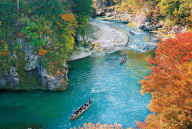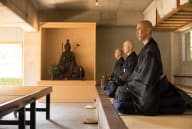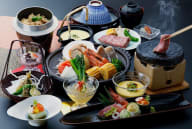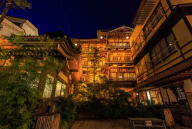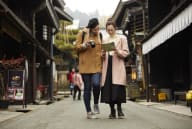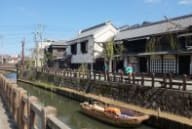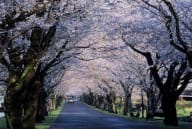
Japan’s sake-brewing traditions trace back centuries, blending craftsmanship, regional character, and a deep respect for nature. In Izumo, Shimane Prefecture, visitors can experience this heritage firsthand at Sakemochida Honten, a historic brewery that continues to preserve age-old techniques. A visit to this renowned site offers not only a window into traditional sake making but also the unique opportunity to explore the historical origins of Japan’s beloved beverage!
Across Japan, winter marks the peak of the sake-brewing season, when the cold air provides perfect conditions for fermentation. At Sakemochida Honten, visitors can experience this special time of year — watching master brewers at work and sampling freshly made sake at its most fragrant and flavorful.
Sake—Japan’s Iconic Drink with Spiritual Roots

Produced by fermenting rice and other ingredients, sake is recognized as Japan’s national drink and is famous worldwide for its dynamic flavor-range—its taste changing as its temperature changes. Deeply connected to history and tradition, the brewing process is considered by many to be an art form in itself.
Available in many distinct types, sake pairs beautifully with a wide range of dishes, and it is a quintessential part of the Japanese culinary experience! It is also important in Japan’s spiritual tradition, and you will often see barrels of sake placed in and around the buildings and grounds of Shinto shrines. Aside from offering sake to win the gods’ favor, sake also plays an important role within traditional religious services, such as the Shinto wedding ceremony where the couple share sake and by doing so are bound together in the eyes of the divine.

Experience Japan’s Sake Traditions in Izumo

Founded in 1877 and located in Izumo’s Momen Kaido (Cotton Road) district, the brewery is steeped in history. Its distinctive buildings retain their original character from over a century ago, and five of them are designated as nationally registered cultural properties. Sakemochida Honten operates under the protection of the nearby Saka Shrine—home to the Shinto deity of sake brewing.
In the brewery’s historical setting, visitors can become immersed in the authentic world of traditional sake making.
Get an In-Depth Look at the Sake-Brewing Process at Sakemochida Honten

A tour of Sakemochida Honten gives visitors a rare glimpse of the ancient art and origins of sake production. Accompanied by the brewery’s fifth-generation Izumo toji (master brewer), participants receive a uniquely comprehensive introduction to the traditional sake-making process, and they can savor different types of delicious sake—from ginjo to josen.

The brewery uses local rice and spring water, traditional brewing practices, and even homemade koji. An indispensable ingredient in brewing sake, koji is a type of mold that breaks down rice starch into sugar, making alcohol production possible. Visitors can witness the meticulous process of making koji, as well as that of making moromi (fermentation mash) and the yeast starter—two other essential ingredients in sake production.

Sakemochida Honten is truly dedicated to craftsmanship, and its environment is carefully preserved so that nothing can degrade the taste of the sake. Visitors are kindly asked to avoid wearing perfume or consuming fermented foods like natto or yogurt before the tour, as even subtle scents and microorganisms can affect the delicate brewing environment.
Sakemochida Honten’s unique experience is only available between the months of November and February.
Izumo: A Doorway to Japan’s Ancient Past

In addition to its deep ties to sake culture, Izumo is celebrated in Japanese mythology as a land rich in legend and tradition. The city is deeply connected to the Kojiki, the oldest record of Japanese mythology and history in existence. Compiled in 712, it details legends of Japan’s foundation, which largely take place in Izumo.
The city is home to Izumo Oyashiro (also known as Izumo Taisha) Grand Shrine, among the nation’s oldest and most spiritually significant Shinto sites. One of the shrine’s most striking features is the immense shimenawa (a twisted rope setting off a sacred space), which hangs at the Kagura Hall, denoting the hall’s divinity. The site is said to be the meeting place of all Shinto deities, who are believed to gather there every October. Sake plays an important role in many of the shrine ceremonies, and it is often used as an offering to the deities.
While exploring the origins of sake, why not delve into Japan’s ancient history and spirituality at the nearby Shimane Museum of Ancient Izumo—and discover the origins of Japan itself?
Related Links:
Momen Kaido
Sakemochida Honten
Shimane Museum of Ancient Izumo
Recommended For You
-
About the author
Author : Katherine Atkinson
Katherine is a writer currently based in a historic shitamachi suburb of Tokyo. In her free time, she loves to learn traditional songs and travel to Japan’s unique remote islands, which always offer an unforgettable experience.

















